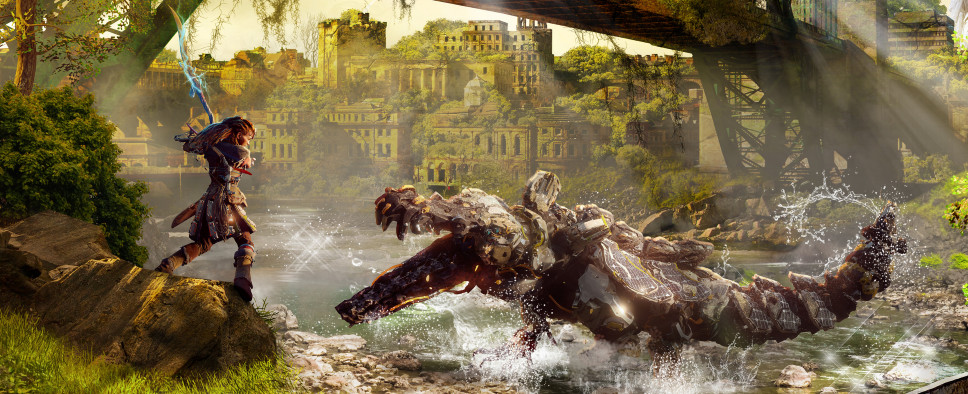Horizon Zero Dawn - Designing the Game
-
Category: News ArchiveHits: 1626

Eric Boltjes, the lead designer at Guerrilla Games, was talking about the development of his studio's highly successful open world action-RPG Horizon Zero Dawn during this year's GDC. Rolling Stone offers a summary of his talk, where we can see how the concepts behind the game evolved over the course of its development, and how beneficial early negative feedback can be. A few snippets:
About two years ago, less than one year before shipping Horizon Zero Dawn, Guerrilla Games held their first big playtest session with twenty players. They had been working on their new open world adventure for a few years, had all kinds of surveys prepared, and were ready to analyze the experiences and feedback the players gave them. The development team thought it was going to be a huge hit.
“It was absolutely brutal,” said Guerrilla Games Eric Boltjes in a crowded hall at the Game Developers Conference in San Francisco. “I truly felt panic, it’s tough to read ‘your game is boring’ in capital letters. Especially since we brought this idea from scratch with so little to go off of.”
Eric Boltjes has worked on nearly every game that Guerrilla Games has put out in his 15 years at the company including most of the Killzone series, he was also a lead designer on Horizon Zero Dawn. He spoke about how tough the feedback process can be, “If you’re lucky you get to make a prototype for one of your ideas, but feedback is going to be mostly negative no matter what,” he said. “It’s only 10 percent of what’s going to ship in the full game but it leads you to second guessing yourself constantly. That continues through the whole process of development, even after shipping.”
[...]
Once context was established they had a unique world alongside gameplay elements they had been developing since the project started, but they had struck a rare balance between creating one concept and designing several individual ideas. “If you add context too soon you might prevent cool ideas from coming to life,” Boltjes added.
At this point the project was starting to feel whole. “We had most of the core mechanics, we had the narrative, and we had the world to put it all in,” Boltjes said. “This is where most of the big problems came in.” The team's lack of experience with the open world genre started to show and their roots in the linear design philosophy behind games like Killzone opened them up to more issues. They realized they had spent too much time on the beginning of the game, the tutorials they designed there did not reflect the majority of the gameplay that took place later in the story.
“Systems that we had emphasized ended up being less important since gameplay was shifted over time,” Boltjes said. “Throwing rocks became less important, but we spent an hour in the beginning teaching players how to do it.”
Other problems arose with things including the complicated nature of the games economy, the simplicity of human combat, and the lack of freedom in choosing how to fight robots. They were able to fix many of the issues by adding cover to human combat making it deeper and by creating a focus system that made the options available when fighting robots more clear.

